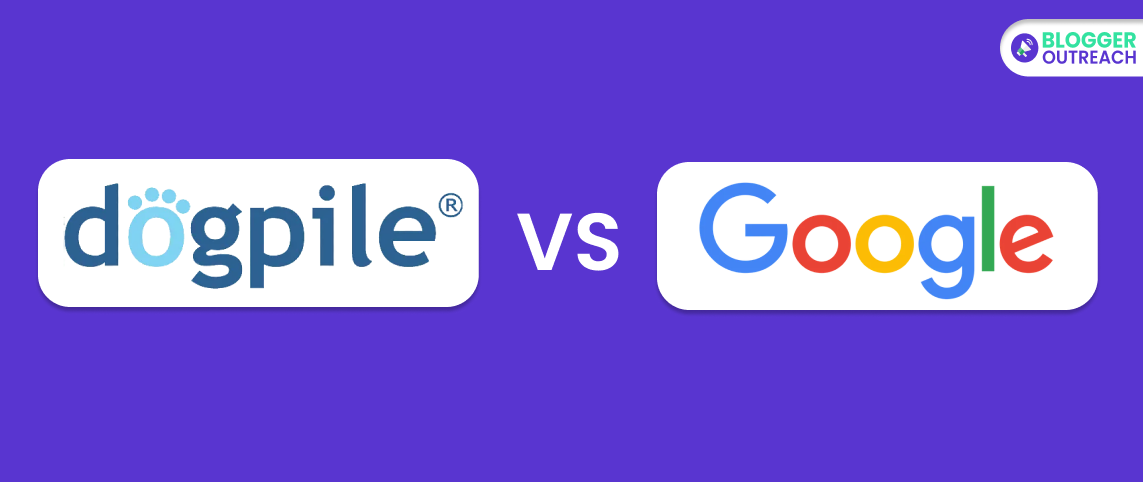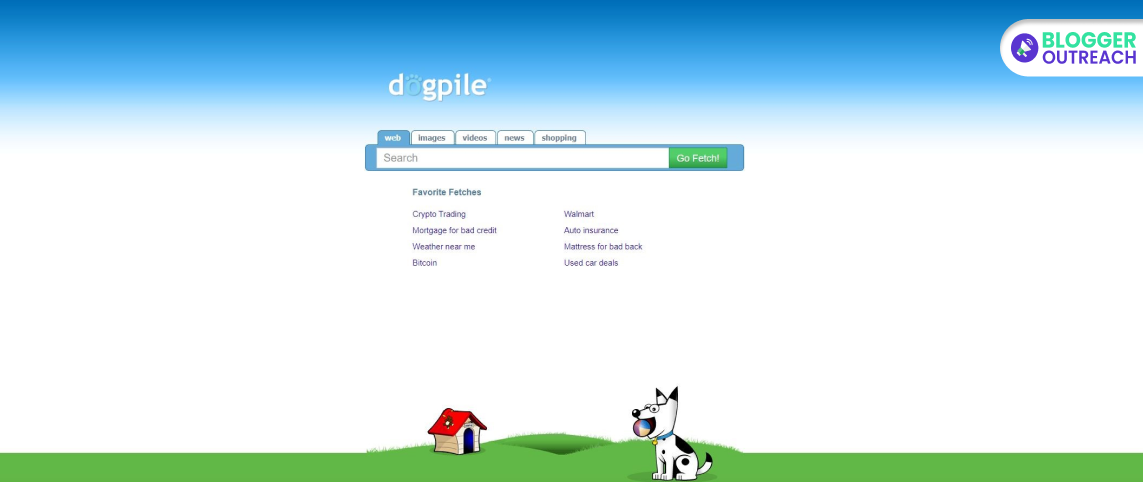Table Of Content
- 1 What Is Dogpile Search Engine?
- 2 History Of Dogpile Search Engine
- 3 Look And Feel Of Dogpile Search Engine
- 4 Features Of The Dogpile Search Engine
- 5 Is Dogpile A Good Search Engine?
- 6 So, Who Should Use Dogpile?
- 7 Biggest Drawback Of Dogpile Search Engine – Privacy
- 8 Dogpile vs Google
- 9 Dogpile Search Engine Changes Name To Avoid Stink
Many of us have started our internet journey with Dogpile in 1996. However, as search giant Google rose to prominence in 1998, Dogpile faded from the limelight.
But is the forgotten search engine worth revisiting in 2024?
Well, in this article, we will share a comprehensive review of Dogpile Search Engine.
But before we discuss that part, let us share something interesting:
Semrush data shows that Dogpile’s traffic was at 2.47M (as of Feb 2024).

And, 63.97% of them are mobile users:

Why did we share the statistics? This is to give you a hint that people are still using Dogpile.
Okay, now coming back to the article – Dogpile Search Engine: In-Depth Review In 2024.
What Is Dogpile Search Engine?

Dogpile is a metasearch engine on the World Wide Web for information. It fetches the best results from Bing, Yandex, Yahoo!, Google, and other popular search engines.
Now, you may be wondering about metasearch technology. Look what Dogpile has said about this:
“In rugby, players come together and pile on top of one another. This is exactly what Dogpile’s metasearch technology does – it compiles all the best results in one easy-to-access place!”
Mascot: Arfa, a cute dog.
History Of Dogpile Search Engine
Dogpile’s story begins back in November 1996. Picture this: Aaron Flin, frustrated with inconsistent search results from various indexes, decides to create something new. His brainchild? Dogpile.
The idea was to check multiple indexes for the best results. Imagine having a tool that combines the strengths of Yahoo!, Lycos, Excite, and several others. That’s what Dogpile was all about.
Now, you might think, “Haven’t I heard of something like this before?” Yes, you probably have.
MetaCrawler was already doing something similar. But here’s where Dogpile stepped up the game. It went beyond traditional web searches. It tapped into Usenet and FTP, making it a more advanced option then.
Fast forward to August 1999, and Dogpile’s journey takes a new turn. It was acquired by Go2net, who also owned MetaCrawler. Things got even more interesting in July 2000.
InfoSpace steps in and buys Go2net for a whopping $4 billion. That’s a big deal, right? And with new ownership, Dogpile gets a fresh new look in December 2000.
Dogpile wasn’t just about searching. It was about excellence too. It won the J.D. Power and Associates award for the best Residential Online Search Engine Service in 2006 and 2007. Now, that’s impressive!
But Dogpile’s story isn’t just about tech and awards. In August 2008, it partnered with Petfinder. Why? To make it easier for you to find and help pets.
In November 2008, Dogpile launched its “Search and Rescue” program. This wasn’t just any program. It was about giving back and helping animals in need. By December 2008, users like you had raised $100,000 through this program.
The story took another twist in July 2016. InfoSpace, Dogpile’s owner, was sold to OpenMail for $45 million. And guess what? OpenMail later became System1. So, Dogpile’s journey is full of twists and turns, acquisitions, and rebrandings.
Look And Feel Of Dogpile Search Engine
Right after you land on the homepage, you see a search bar where you enter your query and a button labelled “Go Fetch!”. The first impression is clean and uncluttered. On the contrary, if you compare it with modern designs, it might feel outdated.

Also, there are separate tabs for web searches, images, videos, and news and it provides a seamless navigation.

And a cute dog, Arfa – the mascot of the Dogpile Search engine.

Now, when you perform a search, you will come across aggregated results from various search engines like Google, Bing, and Yahoo. Format? Each result typically includes the title of the webpage, a short description, and the source engine.
Furthermore, if we talk about customization, Dogpile offers minimal options for the search experience.
Again, the page comes with a related search section entitled – “Are you looking for?”.

Ultimately, the overall UX is simple and minimalistic. For some, it can give a retro vibe (in a good way). Others may design old-school.
Features Of The Dogpile Search Engine
Dogpile, unlike search engines like Google, is a metasearch engine. This means it doesn’t have its own database of web pages. Instead, it pulls results from various search engines and combines them into a single list for you. Here are some of Dogpile’s features:
- Metasearch functionality: This is its core function, allowing you to see results from multiple sources without having to visit each search engine individually.
- Category Links: Dogpile helps you refine your search by offering category-specific searches like News, Images, and Videos.
- Search Refinements: Dogpile offers features like “Are You Looking For?” which suggests alternative spellings and related keywords to help you find what you need.
- Result Management: Dogpile eliminates duplicate results from different search engines and displays a supposedly curated list.
- Customization: Dogpile allows you to set some search preferences.
- Trending Searches: It provides a glimpse into what other users are searching for through “Favorite Fetches”.
However, it’s important to note that it lacks some functionalities like advanced search filters or mobile apps.
Is Dogpile A Good Search Engine?
Do you want diverse perspectives? Deep dive!
Dogpile is like asking a group of experts instead of just one; you get a more varied set of answers. This characteristic makes Dogpile stand out for those who are looking for varied content.
(Possibly uncovering information that mainstream search engines might overlook.)
Yet, Dogpile isn’t without its limitations. It hasn’t quite caught up with the rapid evolution of today’s leading search engines, which are more than just search tools.
They offer integrated features like maps, shopping, and news, creating a more holistic digital experience. Dogpile, in contrast, sticks to the basics of search, which can feel limited in comparison.
But there’s a certain appeal to Dogpile’s simplicity. It’s a departure from the dominance of the big players in the search engine market.
So, Who Should Use Dogpile?
If you enjoy exploring beyond the first few pages of search results…
… If you are curious about what different sources have to offer, Dogpile could be a refreshing choice.
(People who wish to step away from the algorithm-driven results of larger search engines.)
It’s also a good fit for those who are in favor of not tracking user information as intensely as some other engines.
In essence, Dogpile is ideal for users who prioritize variety in their search results.
Biggest Drawback Of Dogpile Search Engine – Privacy
The biggest issue with the Dogpile Search Engine is its inadequate privacy protection. Both the platform and its partners will collect various information about you.
In fact, Dogpile’s parent company, System1, explains what data they collect in their privacy policy:
“Who do we share your Personal Information with
We may share your Personal Information within the System1 Group (as defined below), with our third-party service providers and professional partners, with parties with whom we enter into a corporate transaction, law enforcement agencies, courts or regulatory bodies (to comply with legal obligations) or otherwise with your consent. More information can be found here.”

They don’t just stop at basic info like your name, address, email, and phone number. The site also collects data about your device and browser, where you’re connecting from, and how you got there.
In simple terms, there’s almost nothing they don’t keep track of. They do follow the law regarding data, but they collect a lot. If you’re concerned about your privacy, you might want to consider using a different search engine.
It uses what you do online to give you search results you’re interested in. Personalized results are convenient, but they cost your privacy.
Dogpile vs Google

With Dogpile, you can search across Google, Bing, and Yahoo for a more comprehensive search experience.
Google provides search results based on keywords, location, and website authority, using advanced algorithms.
Well, Let’s Look At The Differences Between These Two:
Search Sources:
- Dogpile: Aggregates results from various search engines.
- Google: Generates its own search results based on its index of web pages.
Search Algorithms:
- Dogpile: Primarily relies on algorithms from other search engines.
- Google: Uses its proprietary PageRank and other algorithms to rank websites.
User Base:
- Dogpile: Has a smaller user base compared to Google.
- Google: Dominates the search engine market with a vast user base.
Market Share:
- Dogpile: Holds a very small share of the search engine market.
- Google: Commands a significant majority of the search engine market.
Features:
- Dogpile: Offers a metasearch feature, combining results for users who want diverse search results.
- Google: Provides a wide range of services beyond search, like Google Ads, Maps, and YouTube.
Digital Marketing Implications:
- Dogpile: May have lower advertising opportunities due to a smaller user base.
- Google: Offers extensive advertising options through Google Ads, reaching a massive audience.
SEO Focus:
- Dogpile: This may require less SEO effort due to reliance on other search engines’ algorithms.
- Google: Demands a more targeted and comprehensive SEO strategy to rank higher in search results.
Dogpile Search Engine Changes Name To Avoid Stink
When you hear the name Dogpile what comes into your mind first? Yes, it may be doggie doo. And when it comes to Europeans and British, they are more specific about all these things than Americans.
So, only for Europe and the United Kingdom, the Dogpile search engine has changed its name to WebFetch. As per the reports, the new name WebFetch has wider international comprehension and also maintains a solid association with its popular cult dog mascot.
Arfie is the mascot for Dogpile or WebFetch for Europe and the UK. The scenario is totally different for the United States of America. And there, it does not matter what your image is of a Dog’s pile. The very name Dogpile will stick to the useful search toolbar and metasearch engine.
For most of the functionality the Dogpile search engine offers, it has to rely on other search tools. For normal searches, it takes help from About, Yahoo, Google, Overture, Teoma, and Ask Jeeves. When it comes to web directories, it has Open Directory, LookSmart, and About.
The list does not end here. It also has some paid inclusion sites, such as FindWhat, Sprinks, and Overture. If you are thinking about vertical search engines, the names are Yahoo, Guaranteed Search Inclusion, PriceGrabber, ABC News, Ditto, and many more.
For further information, you may like to know that WebFetch or Dogpile toolbar has managed to make some friends with its RSS Feed Reader.
Read Also:








